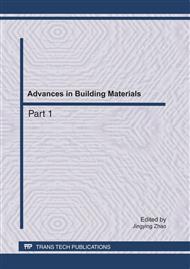p.1773
p.1778
p.1784
p.1789
p.1794
p.1799
p.1804
p.1809
p.1814
Study on Stress Difference-Strength Ratio Rockburst Classification by Rock Unloading Test
Abstract:
Rockburst happened during underground excavation caused by stress re-distribution of surrounding rocks. Stress difference was critical factor to determine whether rockburst happened or not. The stress difference-strength ratio method of rockburst classification was put forward. Rockburst intensities of the same size and different cave shapes were calculated without considering the influence of excavation unloading and considering the influence of excavation unloading by finite element method. Results showed that the grade of rockburst predicted by the stress difference-strength ratio method was lower than by stress-strength ratio method. Rockburst grade was lower one grade for not considering the excavation unloading.
Info:
Periodical:
Pages:
1794-1798
Citation:
Online since:
May 2011
Authors:
Price:
Сopyright:
© 2011 Trans Tech Publications Ltd. All Rights Reserved
Share:
Citation:


